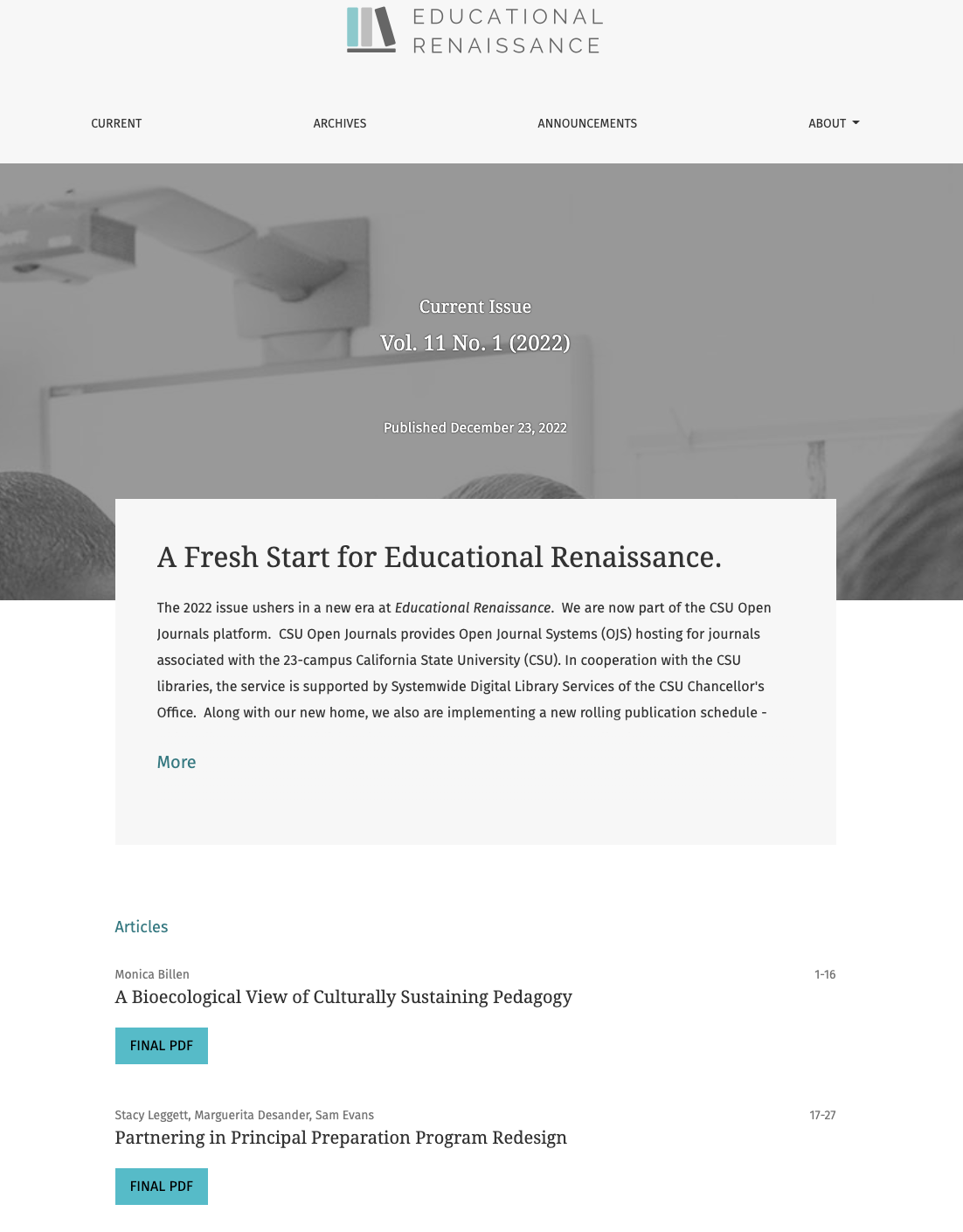Abstract
Teacher Educators as Critical Storytellers: Effective Teachers and Windows and Mirrors is a collection of curated of stories that pushback against the narratives that define a “good” teacher. Told through through critical storytelling methodology, the book draws on the “windows” and “mirrors” framework to invite multiplicies into the understanding of teachers. The book successfully contributes to a broader, inclusive and culturally sustaining narrative of teaching and education related professions and can be implemented as a text for learning with both preservice and inservice teachers.
References
Alston, J. (2018, February). #TimesUp: Stepping out of the boat to lead. Moving from tempered radical to refined revolutions [Lecture]. MACH III: Building on Resilience Lecture Series at Prairie View A& M University, Prairie View, TX.
Bolen, D. M. (2015). Critical Stories, Critical Imaginations, and Critical Possibilities. In Hartlep, N. D., & Hensley, B. O. (Eds.). Critical storytelling in uncritical times. (pp. xi - xv). Springer.
Fassett, D. L., & Nainby, K. (2017). Critical communication pedagogy. In Handbook of Instructional Communication (pp. 248-259). Routledge.
Haberman, M. (2008). Gentle teaching in a violent society. Educational horizons, 86(4), 238-246.
Haberman, M. (2012). The myth of the “fully qualified” bright young teacher. American Behavioral Scientist, 56(7), 926-940.
Ladson-Billings, G. (2009). The dreamkeepers. Successful teachers of African American Children. Jossey-Bass.
Maslow, A (1943). A theory of human motivation. Psychology Review, 50(4), 370-396.
Meyerson, D. E. (2001). Tempered radicals: How people use difference to inspire change at work. Harvard Business School.
Moll, L. C., Amanti, C., Neff, D., & Gonzalez, N. (1992). Funds of knowledge for teaching: Using a qualitative approach to connect homes and classrooms. Theory into practice, 31(2), 132-141.
Style, E. (1996). Curriculum as window and mirror. Social science record, 33(2), 21-28.

